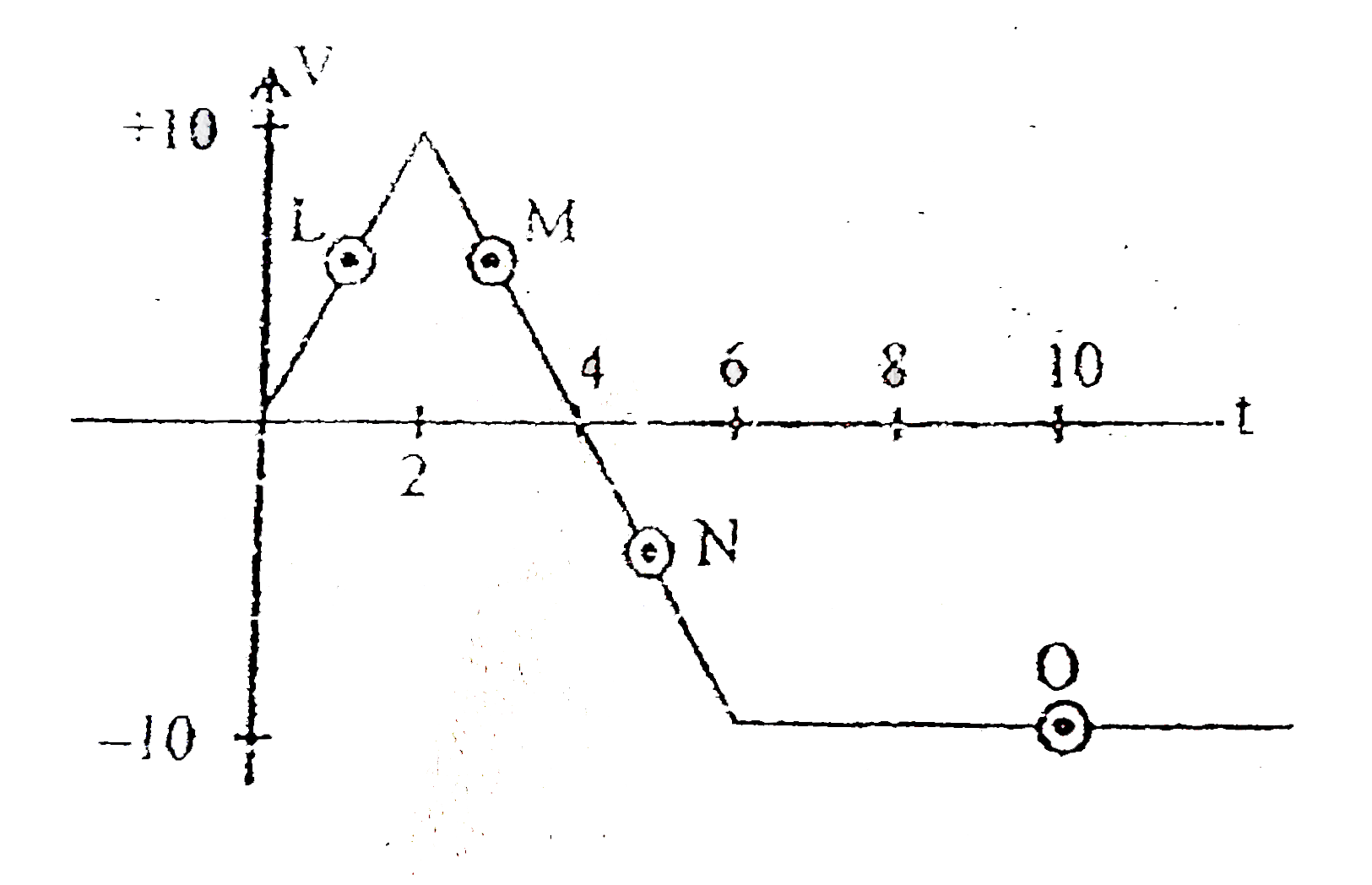A particle is moving along x−axis whose position is given by x=4−9t+t33 then choose the CORRECT statement for thes motion−Solution in Gujrati
Direction of motion is not changing at any of the instants
For 0<t<2s, the particle is speeding up
Direction of motion is changing at t=3sec
For 0<t<3s the particle is speeding up.
The correct Answer is:C
x=4−9t+t33⇒v=dxdt=(−9+t2) and a=(dvdt)=2t. Therefore (v<0 and a>0 for 0<t<3s)
Topper's Solved these Questions
- TEST PAPERBOOK - ALLEN CHAPTER - TEST PAPEREXERCISE - PHYSICS
4 Videos
- TEST PAPERBOOK - ALLEN CHAPTER - TEST PAPEREXERCISE - PHYSICS
4 Videos
- SIMPLE HARMONIC MOTIONBOOK - ALLEN CHAPTER - SIMPLE HARMONIC MOTIONEXERCISE - Example
1 Videos
- TEST PAPER 1BOOK - ALLEN CHAPTER - TEST PAPER 1EXERCISE - PHYSICS
11 Videos
Similar Questions
Choose the correct statement:
View SolutionChoose the correct statement:
View SolutionA rod with rectangular cross section oscillates about a horizontal axis passing through one of its ends and it behaves like a seconds pendulum, its length will be
View SolutionWhy are electric field lines perpendicular at a point on an equipotential surface of a conductor ?
View SolutionA particle is moving along the x-axis whose position is given by x=4−9t+t33. Mark the correct statement(s) in relation to its motion.
View SolutionA partile is moving along x- axis such that its position is given by x = 4 - 9t + (t^(3))/(3) where t is time in seconds, x is in meters, Mark the correct statement(s) :
View SolutionA particle starts from origin and moving along x−axis. Whose v−t graph is as shown . Choose the INCORRECT statement :
 .
.
View SolutionA particle is moving along x- axis whose position is given by x=4-9t+(t^(3))/(3) then choose the CORRECT statement for thes motion -
View SolutionA particle moves along x-axis according to the law x=(t3−3t2−9t+5)m. Then :-
View SolutionA particle moves along x -axis. The position of the particle at time t is given as x=t^(3)-9t^(2)+24t+1 . Find the distance traveled in first 5 seconds.
View SolutionThe position of particle 'x' with respect to time at any instant 't' along x-axis is given by equation x=9t^(2) -t^(3) where x is in meter and t is in seconds. What will be the position of this particle when particle achieves maximum speed along x-axis.
View SolutionPosition of a particle moving along x-axis is given by x=6t−t2+4, where x is in metre and t is in second. Which of the following is correct?
View SolutionThe position (in meters) of a particle moving on the x-axis is given by: x=2+9t +3t^(2) -t^(3) , where t is time in seconds . The distance travelled by the particle between t= 1s and t= 4s is m.
View SolutionAt time t , the position of a body moving along the x - axis is x=(t3−6t2+9t)m Then, it momentarily comes to rest at
View SolutionA particle is moving along x-axis whose position is given by x=4-9t+(1)/(3) .Mark the correct statements in relation to its motion
View SolutionA particle moving along the x axis has a position given by x=54t−2.0t3m. At the time t=3.0s, the speed of the particle is zero. Which statement is correct ?
View Solution
